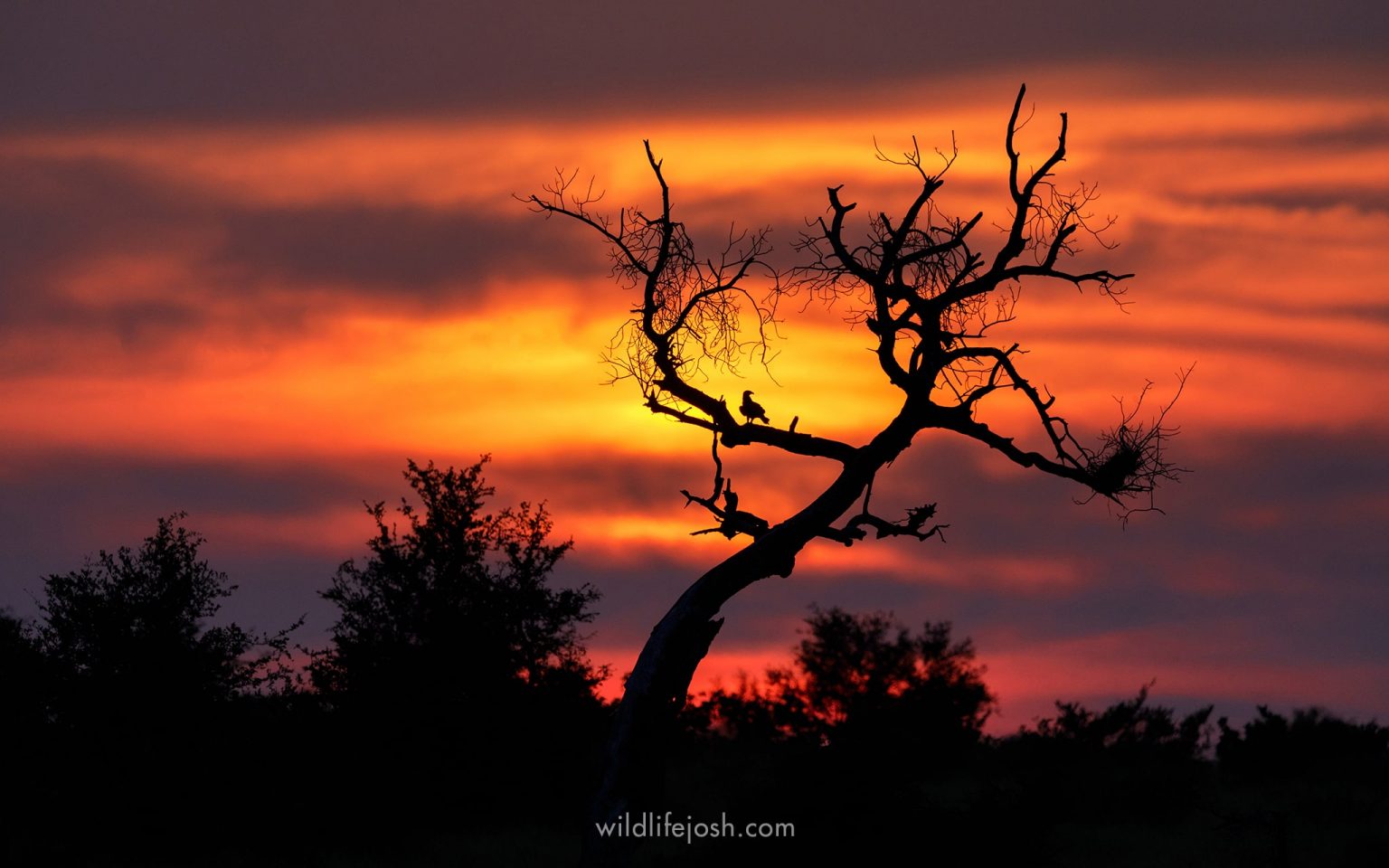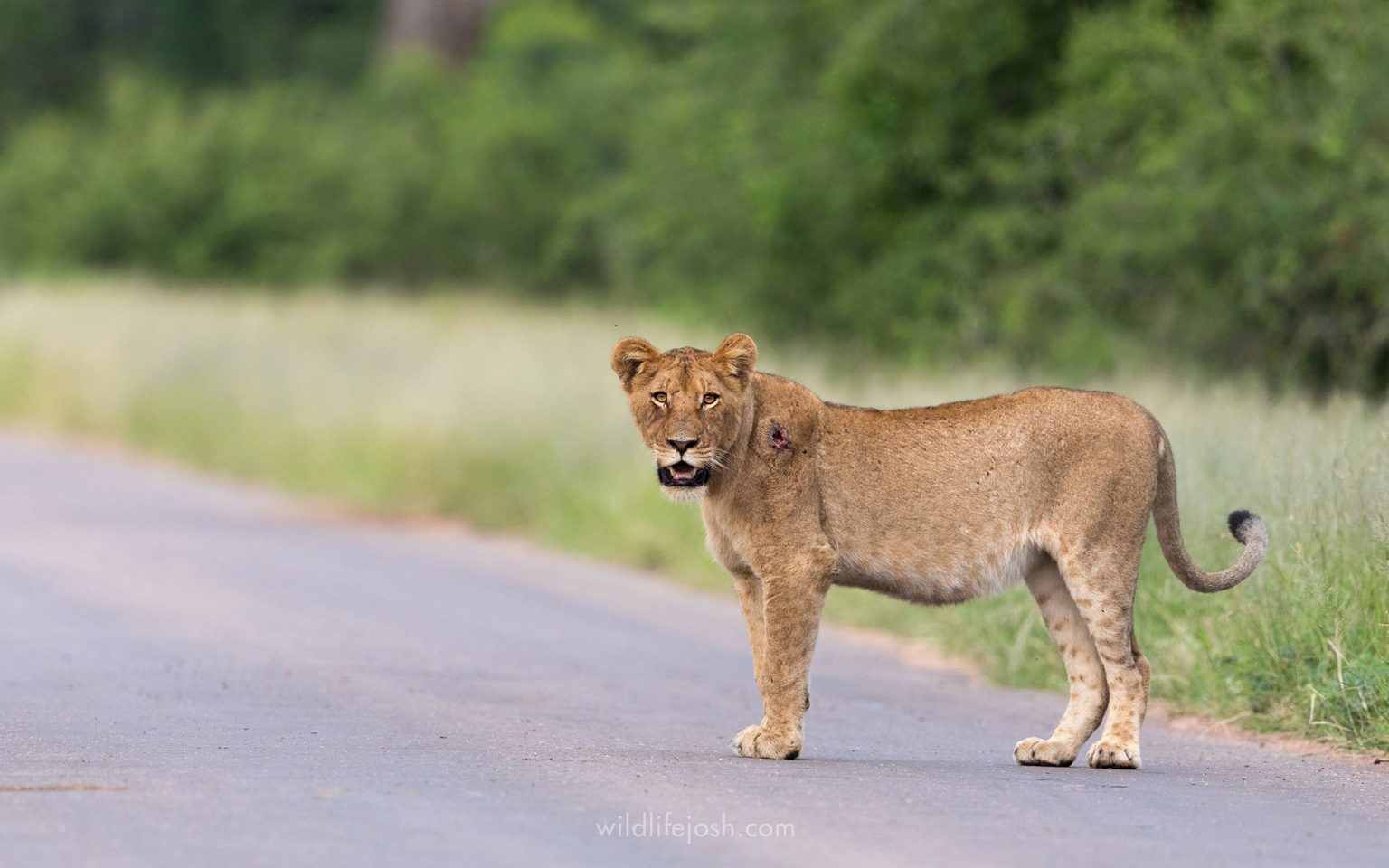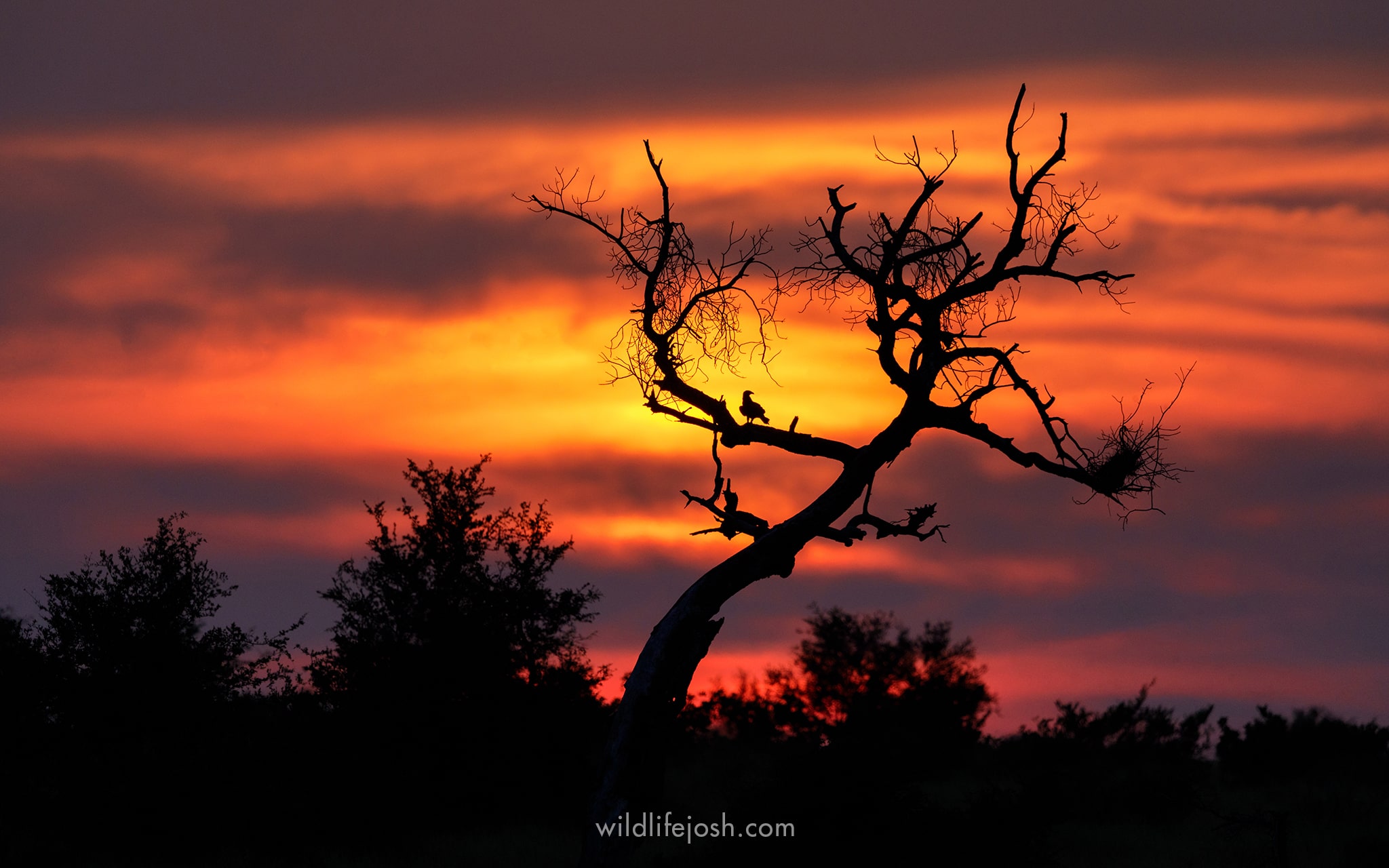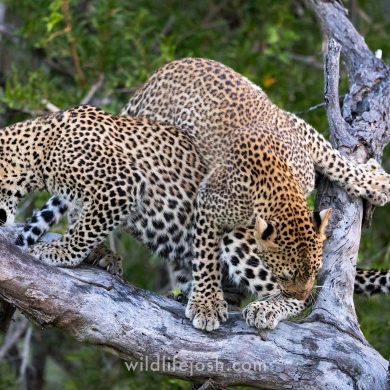Welcome back to Behind the Shot, where I choose one of my favourite photos and ramble on about how it came to exist. Enjoy!
Halfway through my last trip to Kruger National Park, the worst happened. After a week of incredible sunrises and sunsets – that famous African golden hour we know and love – the weather changed, leaving me with gloom and drizzle for the rest of my trip.
For 5 days I woke up in the morning hoping for clear skies. They weren’t. Every afternoon I went out for a drive hoping the day would end in a bright red sunset. It didn’t. But then on the last evening, just as I started heading back to camp for gates closing, the clouds parted. Orange and red light started bursting through the grey. Yes! Finally!
By this point, the sun had set too much for this light to actually reach the ground. I was surrounded by hundreds of wildebeest, zebras and impala but there were no photos to be had. A little cruel, I thought, but I wasn’t going to let the light go to waste. My only chance for a good image was to find an animal in a tree – most likely a bird or a monkey, I thought, but I’d happily take a leopard with a kill – and line it up with the fast-disappearing sun behind it. The pressure was on.
I drove up and down but found nothing. A few doves were perched on trees near the road, but were either too high or too low. I needed to find my Goldilocks. Then suddenly out of the corner of my eye I spotted a hawk flying in the distance. It came to rest in a tree at exactly the right height and after a bit of back and forth to line up the car, the hawk and the sun I started firing away. I only had about 30 seconds if I was going to get back to camp in time.

I shot this photo with my 500mm f4 + 1.4x extender in Aperture Priority mode with the aperture wide open (700mm, f5.6) to let as much light in as possible. If I had had more time to think I would probably have taken the extender off to let more light in at f4 and give me a wider scene, but time wasn’t on my side so my thinking was curvy.
I always set my cameras up so half-pressing the shutter locks the exposure, as well as using spot metering. I aimed my focus point into the sun to expose for the background instead of the foreground, half-pressed the shutter, then composed my frame. Controlling the exposure for a shot like this can also be done with exposure compensation, but I’ve always found that the half-press exposure lock works much quicker for me and I don’t have to take my eye from the viewfinder during the action.
And there we have it. A silhouetted hawk in a tree at sunset. The encounter was over as quickly as it had begun, and I made it back to camp just in time with a big smile on my face. I had seen the light!

By the way, overcast weather isn’t all bad. It actually makes shooting during the day a lot more interesting, as the harsh shadows are replaced with soft, fluffy light. The lioness shot above was taken late on one of these gloomy mornings, but notice that she hardly casts a shadow on the road because the light is so even and balanced. Shooting in the middle of the day on bright, sunny days can be very challenging as the light is much more difficult to work with. But there’s still nothing quite like those incredible African sunsets.
WHILST I’VE GOT YOUR ATTENTION…
Composition is the most important thing for wildlife photography. If you want to improve your composition skills and take your images to the next level, my new ebook is for you! Click here to find out more.



